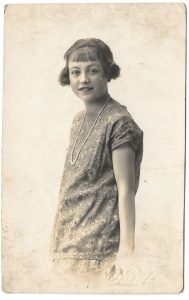A Magic lantern show will launch a community initiative focussing on villagers who fought in the First World War.
The March 3 event will formally kick-off the Farnhill WW1 Volunteers Project, which is researching the lives of those who volunteered to serve in the Great War.
The project will examine what the 68 men did before, during and – in the case of those who survived – after the conflict.
Short biographies of each will be prepared and the information will be made widely available.
What life in the village was like a century ago and the social context in which the volunteers lived will also be examined.
Project co-ordinator, Graham Taylor, said magic lantern show evenings were a regular feature at Kildwick & Farnhill Institute – where the launch event takes place – during the First World War.
“We know that many of the men from Farnhill who fought in the war attended the shows when they were home on leave,” he said.
“We thought that recreating one of these events would be a good way of launching our project.
“The shows, a forerunner of modern motion pictures, were not simply sources of light entertainment. They also provided people at home with news about life at the front.
“It’s been a number of years since anything like this has been put on at the institute and – who knows – it might be the last opportunity we have to experience this unique form of entertainment from a bygone age.”
Experienced lanternist Andrew Gill will recreate a show using authentic Victorian and World War One glass slides and an original magic lantern, converted to use electricity.
Admission to the 7pm event is free and anyone is invited to attend, but organisers warn that some scenes may be unsuitable for young children.
Seats can be reserved. Two seats per application are allowed and reservations will be held until ten minutes before the start.
Mr Taylor said those behind the project, which is spearheaded by the institute committee and supported by an £8,400 Heritage Lottery Fund grant, were still keen to hear from anyone wanting to get involved.
“We are planning a dedicated website, displays, talks and an exhibition to coincide with the centenary of Armistice Day, in November, 2018,” he said.
“We hope as many local people as possible will want to take part in research and other activities.
“In particular, we would really like to hear from people whose relatives came from Farnhill and fought in World War One or lived in the village at that time.”












